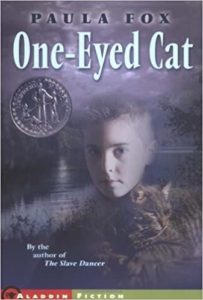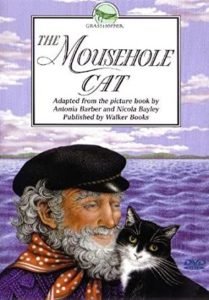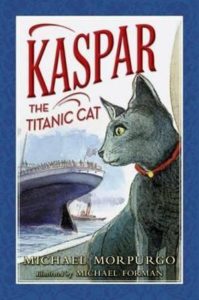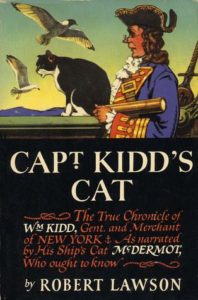
|
Eileen Spinelli’s Do You Have a Cat? (Eerdmans, 2010) is a rhyming picture-book survey of famous historical figures and their cats, from Cleopatra to Queen Victoria, Harriet Beecher Stowe, Calvin Coolidge, and Albert Schweitzer. For ages 4-7. |
|
Visit A Few Famous Cat Lovers for a long alphabetical annotated list. Among the featured cat lovers: Winston Churchill, Charles Dickens, Ernest Hemingway, Charles Lindbergh, and Sir Isaac Newton (who invented the cat flap). |

|
Gourmet chef Julia Child had a cat. Susanna Reich’s Minette’s Feast (Abrams Books for Young Readers, 2012) tells Julia’s story through the eyes of her little French cat, Minette, who – though she loves the delicious smells and wonderful recipes emanating from Julia’s kitchen – much prefers raw mouse. The text is sprinkled with Child quotes and the end notes include a photograph of Julia with Minette. For ages 4-8. |
 |
Marcia Brown’s Dick Whittington and His Cat (Atheneum Books for Young Readers, 1988) is the picture-book story of the homeless orphan who – with the help of his extraordinary cat – became Lord Mayor of London. (Three times.) For ages 5-9. |
|
For more information on Dick Whittington, including the myth, the real story, and historical images, visit Purr ‘n’ Fur Fabled Felines. |

|
In Alan Armstrong’s Whittington (Yearling, 2006), a Newbery Honor book, Whittington (a.k.a. Bent Ear) is a battered tomcat who, evicted by his owners, comes to live in the barn at Bernie’s farm. There he tells the story of his illustrious ancestor, Dick Whittington’s famous cat, to an assembly that includes other adopted animals and Bernie’s orphaned grandchildren, Abby and Ben. For ages 9-12. |

|
In Kirby Larson’s Two Bobbies (Walker Children’s Books, 2008), the two are Bobbi, a dog, and Bob, a cat, both abandoned in New Orleans in the wake of Hurricane Katrina. The two survived together for four months before animal rescuers took them to a shelter, where Bob the cat was found to be blind. The two friends were eventually adopted (together) into a happy home. A wonderful tale of friendship and a nice plug for animal shelters. Pair this one with a field trip. For ages 5-8. |

|
Marilyn Singer’s Cats to the Rescue (Henry Holt and Company, 2006) is a collection of stories about heroic, helpful, and inspirational cats, with catchy notes on cat history and behavior. Featured cats include Dick Whittington’s cat; Scarlett, the cat who saved her kittens from a Brooklyn fire; Paisley, elected as mayor of Guffey, Colorado; and Simon, who received a war medal from the British Navy. For ages 8-12. |

|
In Jean Craighead George’s The Cats of Roxville Station (Puffin, 2010), Rachet, an abused orange kitten, is tossed off a bridge and left to drown by a lady in a fur coat. Rachet survives, and gradually is accepted by the feral cats who live around the Roxville train station as she learns to cope with other wild animals and survive in the outdoors. She’s also befriended by Mike, a boy who lives with his foster mother (who hates cats). Mike and Rachet form a bond – they’re both, Mike says, survivors. The story integrates and explains real behaviors of cats, which adds to the interest. For ages 9-12. |
|
Also see The Cats of Roxville Station Discussion Guide. |
 |
In Paula Fox’s complex and compelling One-Eyed Cat (Aladdin, 2000), set in the 1930s, eleven-year-old Ned Wallis shoots a forbidden gun at a moving shadow. Later, when a wounded one-eyed feral cat shows up, Ned is convinced that this is his doing. Food for discussion for ages 10 and up. |














